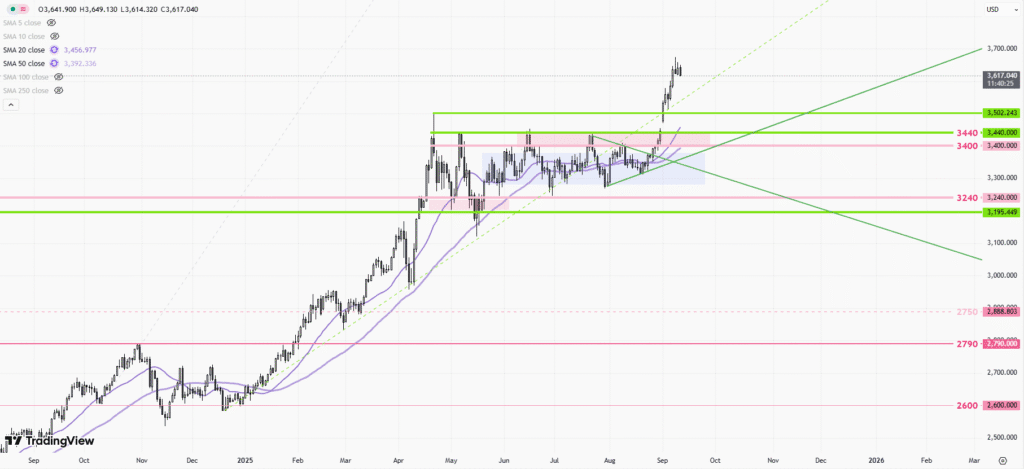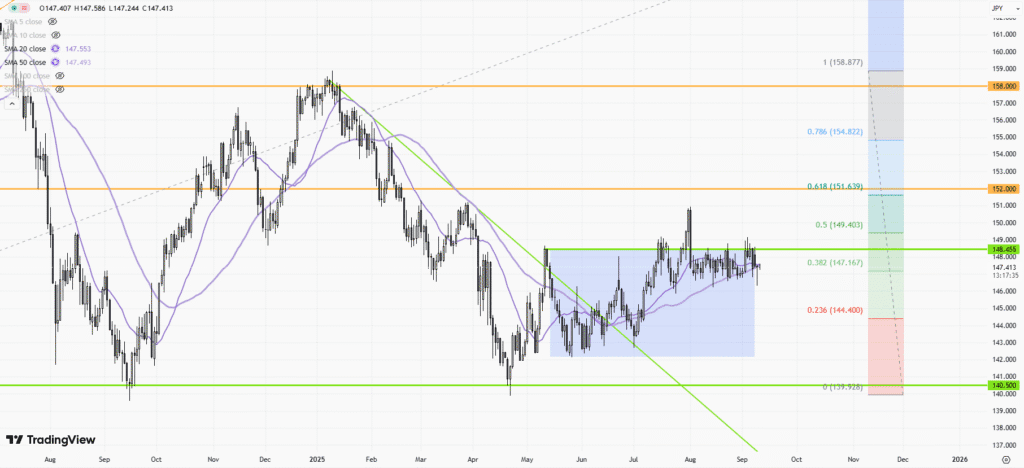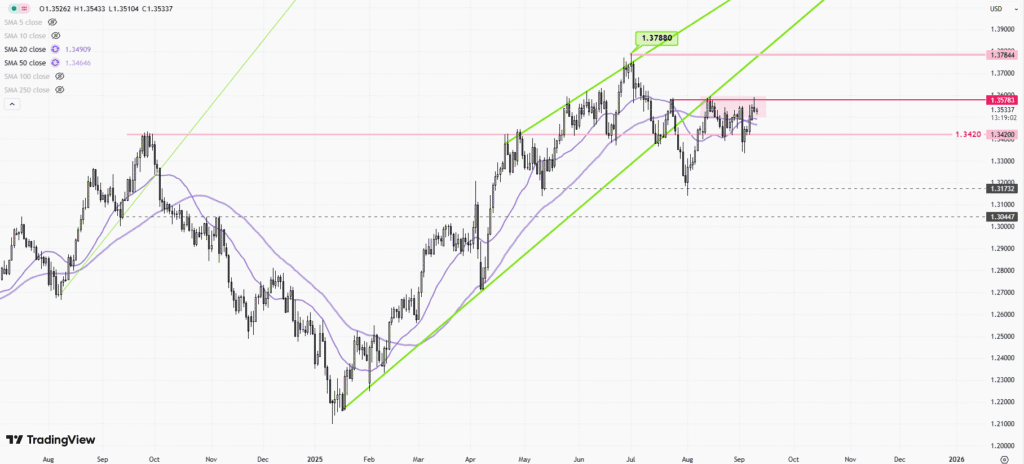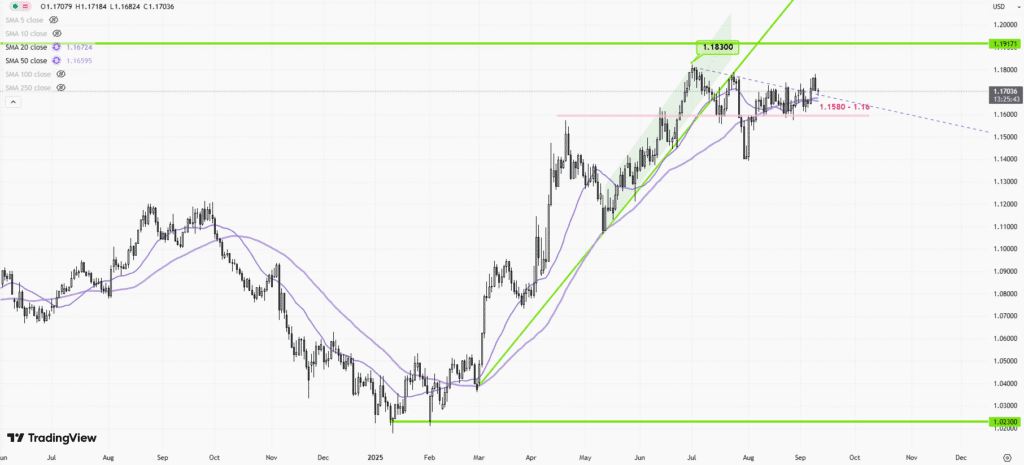 |
| Gold V.1.3.1 signal Telegram Channel (English) |

Gold Price Surges 40% in 2025 Amid Inflation, Dollar Fluctuations, and Geopolitical Risks: Forecasts and Market Outlook
2025-09-25 @ 01:00
Gold prices are once again commanding attention in global financial markets as recent volatility and fresh highs have prompted investors to reassess their strategies. As of late September 2025, gold briefly pulled back to around $3,760 per ounce, impacted by a resurgent US dollar. However, this correction must be viewed in the broader context of gold’s powerful multi-year bull run and the diverse forces shaping its trajectory.
Drivers Behind Gold’s Recent Performance
Multiple factors continue to exert influence on gold’s price, with macroeconomic uncertainty and monetary dynamics remaining at the forefront. The persistent strength in gold reflects ongoing investor concerns about inflation, currency debasement, and geopolitical instability. In particular, the US dollar’s resilience tends to cap short-term gold rallies, given their historic inverse relationship. When the dollar appreciates, gold often slips as investors seek yield elsewhere; conversely, when dollar strength wanes or inflation expectations heighten, gold tends to rally robustly.
Recent data suggests gold has climbed dramatically over the past year—up more than 40% compared to the same period in 2024. Despite current intraday pullbacks, underlying trends remain bullish.
Institutional Forecasts and Price Targets
Looking ahead, most major banks and research institutions remain optimistic about gold’s prospects, though forecasts vary in magnitude. Several leading global banks have raised their gold price targets for 2025:
- Goldman Sachs has updated its 2025 forecast to $3,700 per ounce, a significant revision from its previous $3,100 target.
- J.P. Morgan projects $3,675, Bank of America sees $3,500, and UBS expects $3,500 by year-end.
- ANZ revised its target to $3,600, whereas OCBC Bank stands out as the most bullish, forecasting $3,900 per ounce.
These numbers reflect an emerging consensus that gold will maintain or extend its gains, especially if inflation remains sticky or if economic growth disappoints.
On the more bullish end, some analysts and institutions envision gold surging as high as $4,000 per ounce in the near term, particularly if global risks escalate or central banks adopt further dovish stances. Market commentators emphasize that gold’s recent run—in which it has notably outperformed key assets—could be a harbinger of even higher prices as safe haven demand persists.
Technical Perspectives and Trading Outlook
From a technical perspective, gold faces resistance around the $3,705 mark. A break above this threshold could lead to further gains, possibly toward the $3,719–$3,739 range. While temporary corrections are expected as traders take profits and reassess positions, the underlying momentum remains upward as long as inflation fears and geopolitical stresses continue.
Importantly, gold’s price movements often display short-term volatility; intraday dips are common, especially around key technical levels. Nevertheless, the prevailing trend driven by long-term fundamentals remains intact.
Macro-Economic Themes Shaping Gold’s Future
What’s fueling this persistent interest in gold? Several macroeconomic themes have come to the fore:
- Global inflation: Despite central banks’ tightening cycles over the past two years, stubbornly high inflation rates continue to drive investors toward gold’s safe haven qualities.
- Currency pressures: The US dollar, while strong, faces risks from high debt levels and future monetary easing.
- Geopolitical tensions: From trade wars to regional conflicts, geopolitical uncertainty incentivizes asset diversification—gold is a prime beneficiary.
Moreover, central banks globally have increased their gold holdings, further supporting elevated prices and reducing any near-term downside risk.
Outlook for the Rest of 2025 and Beyond
Market expectations suggest gold prices could stabilize around the $3,700–$3,800 range by year-end, with the possibility of pushing higher in the event of market shocks or further easing by central banks. Forecasts for 2026 and beyond remain resolutely bullish, with several long-term projections aiming for $4,200–$5,000 by the end of the decade.
For individual investors, the outlook for gold remains compelling but nuanced. Volatility is inevitable, especially as monetary policy shifts and risk sentiment fluctuates. Nevertheless, gold continues to offer hedging benefits against inflation, currency weakness, and financial instability.
Conclusion: Navigating Opportunities in the Gold Market
The gold market’s latest pullback is largely a function of short-term dollar strength and technical adjustments, but the bigger picture remains decidedly bullish. With institutional forecasts leaning toward sustained gains, investors should continue to monitor inflation developments, central bank policy, and technical chart patterns closely.
Those holding gold for strategic diversification may well find continued upside, with periodic corrections offering fresh entry points. As history shows, gold’s role as a store of value becomes most prominent when uncertainty runs high—suggesting its momentum could well persist into the coming quarters.








